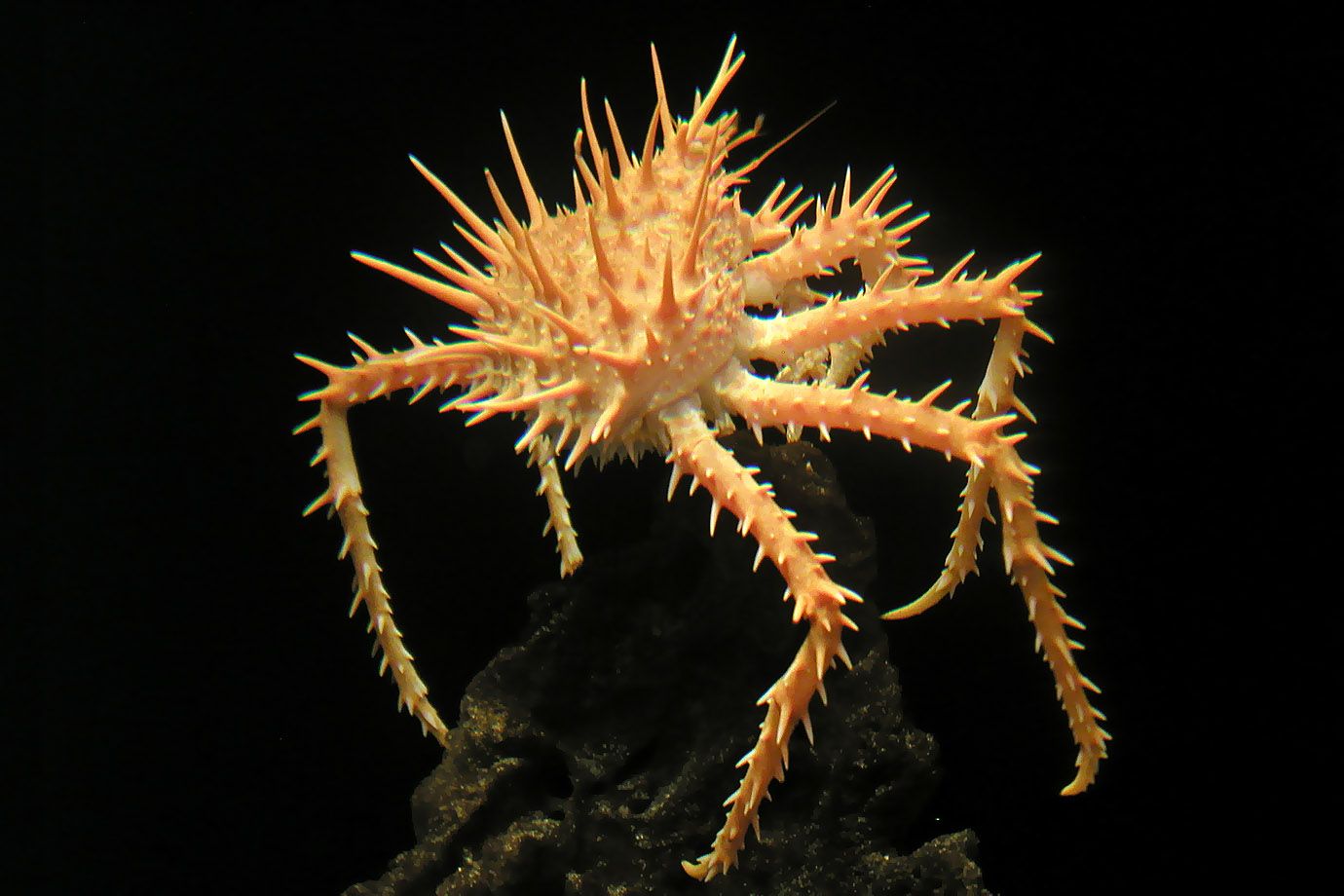
King Crabs
King crabs, also called stone crabs, are a superfamily of crab-like decapod crustaceans chiefly found in cold seas. Because of their large size and the taste of their meat, many species are widely caught and sold as food, the most common being the red king crab, Paralithodes camtschaticus.
King crabs are generally thought to be derived from hermit crab-like ancestors, which may explain the asymmetry still found in the adult forms. Although some doubt still exists about this theory, king crabs are the most widely quoted example of carcinisation among the Decapoda. The evidence for this explanation comes from the asymmetry of the king crab's abdomen, which is thought to reflect the asymmetry of hermit crabs, which must fit into a spiral shell. Although formerly classified among the hermit crabs in the superfamily Paguroidea, king crabs are now placed in a separate superfamily, Lithodoidea.
Glyptolithodes is found chiefly in the Southern Hemisphere, but extending as far north as California, although all its closest relatives live in the Northern Hemisphere. Its single species, G. cristatipes was originally placed in the genus Rhinolithodes.
Source: en.wikipedia.org/wiki/King_crab - 27.11.2011
Californian King Crab
With such a build it is difficult to see at the first sight, where is the front- and the back side.
This King Crab shows its right back side.







